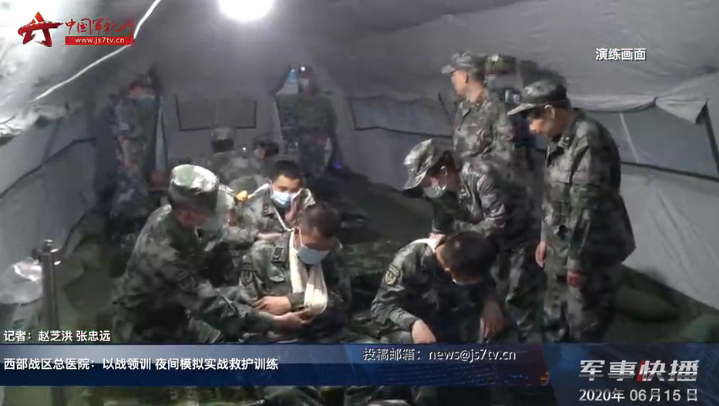Its man behind the gun and not the fighter jets.Indian Military has become an embarrassment to its Army suppliers.PAF is 1/3rd of IAF but still it gave them a bloody nose. How IAF and Indian Army bluffs,read this articleThe Mirage 2000 is superior to J-11 and Su-27 fighters? I could see the Su-30MKIs being a dangerous threat but a Mirage 2000 ... that's a stretch.
You are using an out of date browser. It may not display this or other websites correctly.
You should upgrade or use an alternative browser.
You should upgrade or use an alternative browser.
Ladakh Flash Point
- Thread starter Mt1701d
- Start date
- Status
- Not open for further replies.
I saw this over at PDF:
Here is how the whole thing went down from the Chinese perspective. One of the construction workers involved posted online last night on Weibo.
Chinese wounded in the fighting:
- Chinese construction crew was building camp and bunkers in the disputed zone.
- Indian side arrived with anywhere from 60 to 80 men to disrupt project in the evening.
- Construction workers tried to run back towards China's line of control. Several got caught and was beaten by Indians.
- Workers that made it back to Chinese side summoned back two companies of troops, approximately 200 soldiers. The construction crew also went back with shovels and tools for the upcoming brawl.
- Troops attacked Indians with clubs, pipes and sticks. One Indian soldier was killed on the spot in the initial confrontation. I believe that was the Indian battalion commander that was killed. To give him credit, he led his men in front according to the guy that posted.
- Outnumbered, the other Indian troops tried to hastily retreat down a steep hill. Chinese troops gave chase and toss rocks down the slope at the retreating Indians. Large number of Indians fell down the cliff after being hit by rocks.
- By the time Chinese side stopped, it was already dark. Indian side did not send search parties until higher ranking officers from both sides negotiated a de-escalation process. By the time India sent search parties, several hours had passed.
- Some Indian troops froze to death in sub-zero temperatures, or died from their injuries after failing to receive first aid in time.
- Chinese side packed up camp and went back to its side of the line after being ordered not to further aggravate the situation. Those severely injured were evacuated by helicopter to field hospitals.
- Some Indians troops were captured after the fight ended. They were released quickly as China is not at war with India so it can't keep them as prisoners.

Upper right"演练画面“= Training picture
Very interesting account ... seems pretty plausible to me. Does anyone have the link to the original weibo post?
Indian army and Godi media behaves like BollywoodUntil such time as China makes an official statement, all we'll have are worthless rumours with zero credibility.
Indian satellite imagery experts and Sinologists are taking help from borrowed staellite images and Google Maps to parrot the narrative that India is holding its territory..one simple question,why Ajay Shukla,Lt Gen HS Panag and Pravin S from India are talking of Chinese incursions across LAC,and that to at six places..why Indian forces suffered losses if Chinese were not across the so called perceived LAC? Stop peddling Open source crap and look at ground situation
BS, these images are from a website which talks of training of Chinese troops in medical aid..even the dress worn by Chinese troops is not of winters,what to talk of 17000 feet of freezing temperature..Indian addiction to Bhollywoood is understood,its a war stupid..for more details visit the website
Has anyone read this report? It basically argues why India still has an edge over China (unless China has enough missiles to annihilate India bases during first strike)
There are several problems with this CNN article related to its source, empirical evidence and its technical analysis.
1) It sources from the "belfer center"... not exactly RAND or JANES is it? It's a university-level political think tank that derives its funding from pandering to the political establishment. So it's in its vested interest to build up India, which is an American sponsored "Quad" ally. But its conclusions are at odds with actual military analysts like Sawhney, who was indeed a former JANES editor. Myself and other members like @ougoah have cited his analysis many times on the Indian News thread.
2) The empirical evidence on the ground contradicts the article's conclusions. If India had any "edge" over China, would it have allowed China to take a strategic chunk of its claimed territory, without responding militarily? Here's a brutal fact of anarchistic geopolitics: Even when you don't have an edge over your opponent, you still need to fight back. For example, China during the Korean War launched a full scale war on the US, at a time when it wasn't even a nuclear power. It risked nuclear annihilation all over a buffer region. Why? Because like most other countries, China understands this basic fact of geopolitics. The will to fight is even more important than capability, because that is the actual deterrent. Refusing a military challenge always decreases your security at a strategic level. So claiming that India has an "edge" and still chose to back down makes it much worse for India, it makes no sense.
3) Beyond the quality of its sources and the empirical evidence on the ground, the technical analysis that is provided for such a contrary opinion is severely lacking (and the article clearly admits that it disagrees with conventional wisdom.) The analysis bases everything on a lack of Chinese equipment currently deployed in the theater. Even if we assume that's true, this is a variable completely controlled by China. So right there, the analysis fails. But there are many other problems e.g. it claims that the PLAAF lacks real world training. The PLAAF today operates training facilities that are set up like Red Flag in the US, capable of tracking major formations involved in complex training sorties and combined arms maneuvers. Very few countries have access to such facilities at home (most US allies have to go to Red Flag.) India has nothing remotely comparable to such facilities, and its encounter last year against the PAF proved to everyone how unprepared the IAF is for real-world combat. Lest we forget, it lost a Mig, shot down its own chopper in a panic and managed to get bombed, even after Pakistan literally told India that it was going to bomb it (so the IAF can't hide behind the "surprise" factor.) According to reports by Pakistani analysts like Kaiser Tufail, most of the IAF's communications were jammed and the IAF Flankers and Mirages bugged out without even engaging. So how exactly is the IAF expected to survive against the PLAAF today? Have things really improved that much for the IAF in the span of a year? Lastly, the analysis ignores the reported fact that India has very low reserves of ammunition needed to sustain conflict with "any" foe, let alone China. All of these omissions prove a clear bias.
Last edited:
- Status
- Not open for further replies.

